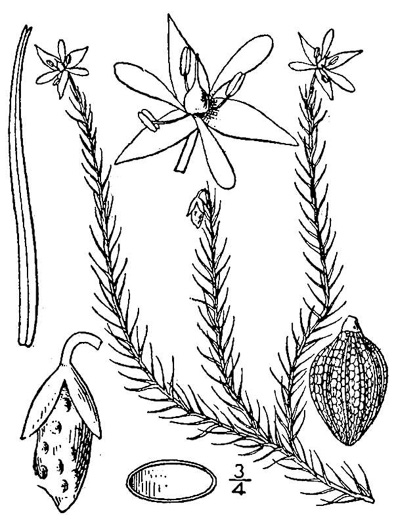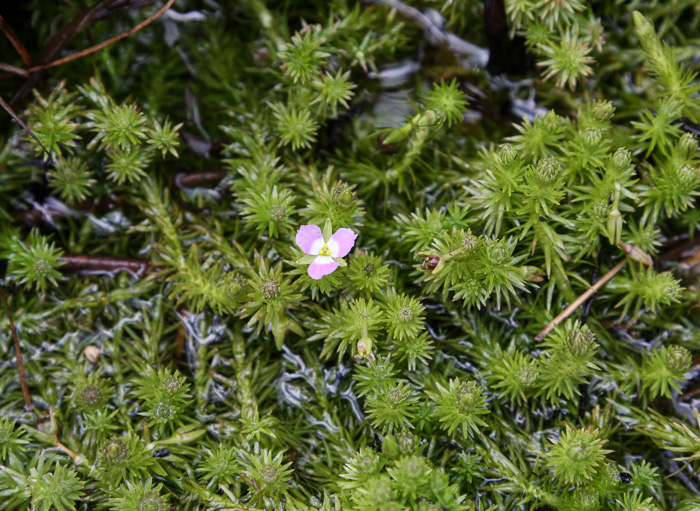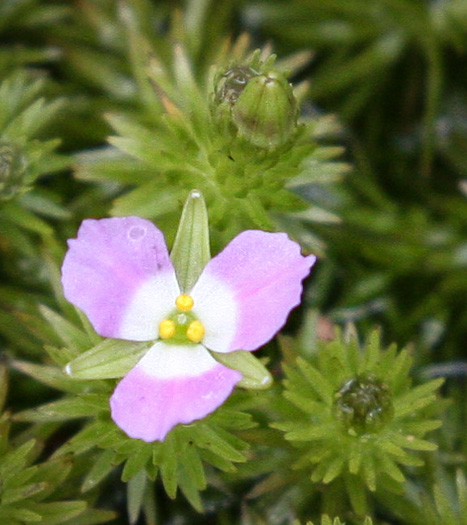Hovering over an image will enlarge it and point out features (works better on desktop than on mobile).
![]() A camera indicates there are pictures.
A camera indicates there are pictures.
![]() A speaker indicates that a botanical name is pronounced.
A speaker indicates that a botanical name is pronounced.
![]() A plus sign after a Latin name indicates that the species is further divided into varieties or subspecies.
A plus sign after a Latin name indicates that the species is further divided into varieties or subspecies.
Most habitat and range descriptions were obtained from Weakley's Flora.
Your search found 2 taxa in the family Mayacaceae, Bogmoss family, as understood by Weakley's Flora.

Common Name: Aublet's Bogmoss
Weakley's Flora: (4/14/23) Mayaca aubletii FAMILY: Mayacaceae
INCLUDED WITHIN PLANTS National Database: Mayaca fluviatilis FAMILY: Mayacaceae
SYNONYMOUS WITH Vascular Flora of the Carolinas (Radford, Ahles, & Bell, 1968): Mayaca aubletii 034-01-001 FAMILY: Mayacaceae
Habitat: Marshes, streams, swamp forests, shores of natural lakes (rarely in artificial impoundments), seepage areas, in saturated soil and usually associated with seepage
Uncommon in Coastal Plain
Native to the Carolinas & Georgia

![]() Common Name:
Stream Bogmoss
Common Name:
Stream Bogmoss
Weakley's Flora: (4/14/23) Mayaca fluviatilis FAMILY: Mayacaceae
INCLUDED WITHIN PLANTS National Database: Mayaca fluviatilis FAMILY: Mayacaceae
SYNONYMOUS WITH Vascular Flora of the Carolinas (Radford, Ahles, & Bell, 1968): Mayaca fluviatilis 034-01-002 FAMILY: Mayacaceae
Habitat: Mucky marshes, streams, swamp forests, shores of natural lakes (rarely in artificial impoundments), in saturated soil or variously submersed
Common in GA Coastal Plain, rare in Carolinas
Native to the Carolinas & Georgia
Your search found 2 taxa. You are on page PAGE 1 out of 1 pages.




